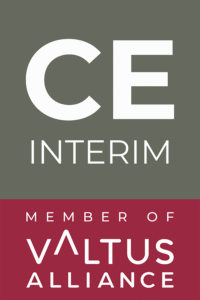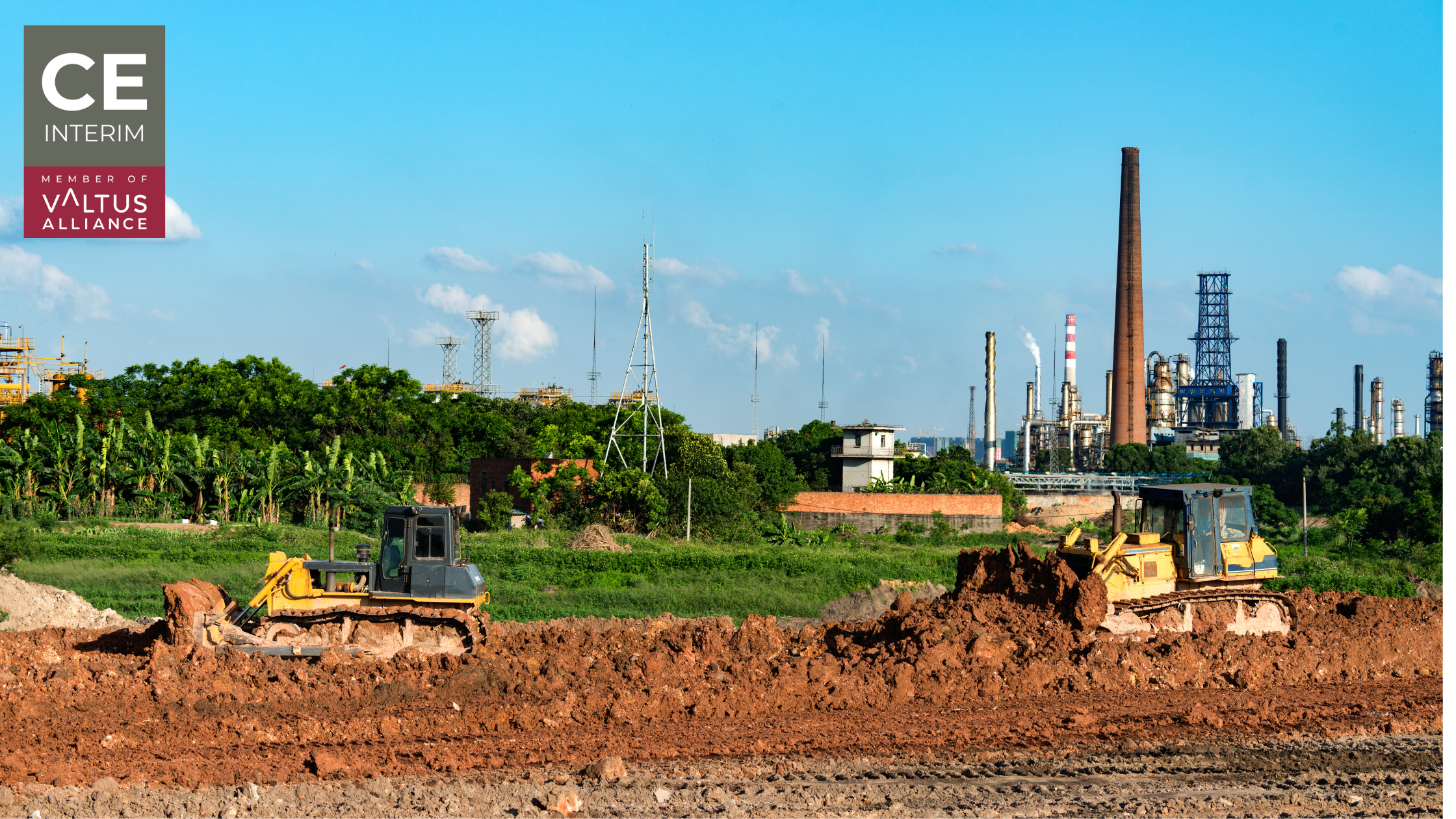ليس لديك الوقت الكافي لقراءة المقال كاملاً؟ استمع إلى الملخص في دقيقتين.
إن توجيه NIS2 تشريعًا تاريخيًا يهدف إلى تعزيز الامتثال للأمن السيبراني في جميع أنحاء الاتحاد الأوروبي. يستند هذا التوجيه المحدّث إلى التوجيه الأصلي الخاص بنظام المعلومات الوطنية من عام 2016، حيث يقدم تغطية أوسع نطاقًا وأكثر صرامة متطلبات الامتثال لـ NIS2وزيادة المساءلة في القطاعات الرئيسية.
كما المخاطر السيبرانية في أوروبا ينمو، فإن المواءمة مع المعيار الدولي الجديد 2 ليس ضروريًا فقط للالتزام التنظيمي ولكن أيضًا لتأسيس المرونة السيبرانية وحماية البنية التحتية الحيوية.
إن توجيه NIS2 دخل حيز التنفيذ في 16 يناير 2023. ولدى الدول الأعضاء في الاتحاد الأوروبي مهلة حتى 17 أكتوبر 2024 لدمج متطلباته في قوانينها الوطنية. بالنسبة للشركات، يشير هذا الموعد النهائي إلى أهمية الاستعداد الاستباقي.
تشرح هذه المقالة ما الذي يستلزمه نظام NIS2 ومن الذي يؤثر عليه والخطوات اللازمة لتحقيقه الامتثال لـ NIS2.
ما هو توجيه NIS2؟
إن توجيه NIS2 يوسع نهج الاتحاد الأوروبي في مجال الأمن السيبراني من خلال تحديث وتوسيع نطاق التوجيه الأصلي الخاص بنظم المعلومات الوطنية. وباعتباره أول تشريع شامل على مستوى الاتحاد الأوروبي بشأن الأمن السيبراني، فقد وضع التوجيه المتعلق بالأمن السيبراني (NIS) المعايير الأساسية ل الامتثال للأمن السيبراني في الخدمات الأساسية.
يوسع نظام NIS2 نطاق التغطية ليشمل المزيد من القطاعات ويضع معايير أكثر صرامة لحماية البيانات والأمن السيبراني في الاتحاد الأوروبي.
في إطار نظام المعلومات الإدارية الوطني 2، يتحول التركيز نحو نهج جميع المخاطروالتي تتضمن تدابير للحماية من التهديدات الرقمية والمادية للشبكة وأنظمة المعلومات.
هذا إطار عمل NIS2 إرساء معايير موحدة في جميع الدول الأعضاء، مما يساعد على تعزيز المرونة السيبرانية في أوروبا.
لماذا تم تقديم NIS2؟
على الرغم من أن التوجيه الأصلي الخاص بنظام المعلومات الاستخبارية الوطنية كان رائدًا، إلا أنه واجه تحديات في التنفيذ أدت إلى عدم الاتساق في جميع أنحاء الاتحاد الأوروبي. يعالج التوجيه NIS2 هذه الثغرات من خلال توسيع نطاق القطاعات التي يشملها وتوحيد العقوبات وتعزيز التزامات الإبلاغ.
تهدف NIS2 إلى تعزيز مرونة الاتحاد الأوروبي السيبرانية في القطاعين العام والخاص.
من خلال تنفيذ متطلبات الامتثال لـ NIS2، يسعى الاتحاد الأوروبي إلى الحد من نقاط الضعف، وتحسين إدارة المخاطر السيبرانيةوتوفير استجابة متماسكة للتهديدات السيبرانية المتطورة.
التغييرات الرئيسية من NIS إلى NIS2
يعتمد NIS2 على أساس التوجيه الأصلي ولكنه يقدم العديد من التحديثات الهامة:
1) النطاق الموسع: ينطبق NIS2 الآن على 11 قطاعاً أساسياً (مثل الطاقة والرعاية الصحية والتمويل) و سبعة قطاعات مهمة (بما في ذلك إنتاج الغذاء والبنية التحتية الرقمية والخدمات البريدية).
2) الإبلاغ عن الحوادث بشكل أكثر صرامة: يجب على المنظمات الإبلاغ عن الحوادث الهامة في غضون 24 ساعة، مع تقديم تقرير متابعة مفصل في غضون 72 ساعة. وهذا الإبلاغ عن حوادث NIS2 يضمن المعيار استجابة أسرع وتنسيقًا أفضل.
3) المساءلة التنفيذية: يضع نظام NIS2 المسؤولية مباشرةً على عاتق الإدارة العليا، مما يتطلب من المديرين التنفيذيين فهم أدوارهم في الأمن السيبراني والمشاركة في التدريب المستمر.
4) العقوبات المنسقة: العقوبات ثابتة في جميع الدول الأعضاء، حيث تصل غرامات عدم الامتثال إلى 10 ملايين يورو أو 21 تيرابايت من حجم المبيعات العالمية للمخالفات الأقل، وتصل إلى 20 مليون يورو أو 41 تيرابايت من حجم المبيعات العالمية للمخالفات الجسيمة.
تعكس هذه التغييرات التزام الاتحاد الأوروبي بحماية المرونة السيبرانية في أوروبا من خلال وضع متطلبات صارمة وواضحة.
من الذي يحتاج إلى الامتثال لـ NIS2؟
إن توجيه NIS2 ينطبق على مجموعة واسعة من الكيانات، لا سيما مشغلي الخدمات الأساسية (OES) و مقدمو الخدمات الرقمية (DSPs).
1) مشغلي الخدمات الأساسية (OES): تشمل هذه الفئة قطاعات حيوية لاقتصاد الاتحاد الأوروبي ومجتمعه، مثل الطاقة والرعاية الصحية والتمويل والنقل والإدارة العامة. يجب أن تمتثل OES لمتطلبات NIS2 بغض النظر عن الحجم بسبب دورهم المهم.
2) مقدمو الخدمات الرقمية (DSPs): يتم تضمين بعض الشركات الرقمية - مثل مقدمي الخدمات السحابية ومحركات البحث ومنصات التجارة الإلكترونية - إذا استوفت معايير الحجم. يجب أن يكون لدى مقدمي الخدمات الرقمية المتوسطين 50 موظفًا على الأقل ومبيعات سنوية تبلغ 10 ملايين يورو، بينما يجب أن يكون لدى مقدمي الخدمات الرقمية الكبار 250 موظفًا على الأقل ومبيعات تبلغ 50 مليون يورو.
ينطبق نظام NIS2 على عدد أكبر من المؤسسات، مما يجعل الامتثال ضروريًا للقطاعات الحيوية والمهمة في جميع أنحاء الاتحاد الأوروبي.
المتطلبات الأساسية للتوافق مع NIS2
تحقيق الامتثال لـ NIS2 يتضمن الالتزام بالعديد من المتطلبات الأساسية التي تشكل أساس قائمة التحقق من الامتثال لـ NIS2:
1) إدارة المخاطر والسياسات: يجب على الشركات إجراء تقييمات منتظمة لتحديد نقاط الضعف المحتملة وتنفيذ تدابير لمعالجتها، ودعمها بشكل قوي إدارة التهديدات السيبرانية.
2) إدارة الحوادث والإبلاغ عنها: تحتاج المؤسسات إلى تنظيم الاستجابة للحوادث البروتوكولات. يجب الإبلاغ عن الحوادث الكبيرة في غضون 24 ساعة، يليها تقرير كامل في غضون 72 ساعة. وهذا يتماشى مع الإبلاغ عن حوادث NIS2 المعايير.
3) استمرارية الأعمال وإدارة الأزمات: يجب وضع خطط لضمان استمرارية الوظائف الحيوية حتى أثناء الحوادث السيبرانية، مما يقلل من وقت التوقف عن العمل.
4) أمن سلسلة التوريد: ينص التوجيه على أن تقوم المؤسسات بتقييم سلاسل التوريد الخاصة بها وتأمينها، وهو أمر ضروري نظراً للهجمات الأخيرة التي تعرضت لها سلاسل التوريد البارزة.
5) برامج التدريب والتوعية: يتعين على كل من المديرين التنفيذيين والموظفين الخضوع لتدريب لفهم متطلبات الامتثال لـ NIS2 وأدوارهم في الأمن السيبراني.
6) إدارة الأصول: من الضروري إجراء جرد شامل للأصول المهمة لإدارة وحماية الموارد القيّمة داخل المؤسسة.
وتشكل هذه المتطلبات ما يلي إطار عمل NIS2 التي تعزز الامتثال للأمن السيبراني عبر أبعاد متعددة.
خطوات تحقيق الامتثال لـ NIS2
يعد النهج المنظم ضروريًا للمواءمة مع متطلبات الامتثال لـ NIS2. فيما يلي دليل لمساعدة الشركات على اجتياز عملية الامتثال بفعالية:
1) إجراء تحليل الثغرات في نظام المعلومات الوطني 2: قم بتقييم تدابير الأمن السيبراني الحالية الخاصة بك مقابل قائمة التحقق من الامتثال لـ NIS2 لتحديد المجالات التي تحتاج إلى تحسين.
2) تطوير سياسات أمن المعلومات: وضع السياسات الرسمية التي تحدد الأدوار والمسؤوليات والإجراءات التي تتماشى مع معايير NIS2.
3) تنفيذ التدابير الفنية والتنظيمية: قم بإعداد عناصر التحكم في الوصول، وتشفير البيانات، وأنظمة المراقبة لحماية الأصول المهمة بفعالية.
4) بدء برامج التدريب والتوعية: توفير التدريب الإلزامي في مجال الأمن السيبراني لضمان فهم جميع أعضاء الفريق، وخاصة الإدارة العليا، لمسؤولياتهم بموجب لوائح الاتحاد الأوروبي للأمن السيبراني.
5) إنشاء آليات للاستجابة للحوادث: التأكد من الامتثال للمتابعة الأولية لمدة 24 ساعة والمتابعة لمدة 72 ساعة الإبلاغ عن حوادث NIS2 المتطلبات من خلال وضع خطة استجابة للحوادث.
6) مراقبة الامتثال المستمرة: تعتبر عمليات التدقيق المنتظمة والمراقبة المستمرة ضرورية للحفاظ على المواءمة مع الامتثال لـ NIS2 المعايير بمرور الوقت.
سيساعد اتباع هذه الخطوات المؤسسات على بناء إطار عمل مرن يتماشى مع حماية البيانات والأمن السيبراني في الاتحاد الأوروبي اللوائح.
الجدول الزمني للامتثال والمواعيد النهائية
إن الموعد النهائي للامتثال لـ NIS2 في 17 أكتوبر 2024، يقترب بسرعة. يجب أن تدمج الدول الأعضاء متطلبات التوجيه بحلول هذا التاريخ، لذا يجب على الشركات إعطاء الأولوية لمجالات الامتثال الرئيسية قبل وقت كافٍ.
التركيز على العناصر ذات الأولوية القصوى - مثل الإبلاغ عن الحوادثوتقييم المخاطر، والتدريب التنفيذي - يمكن أن يساعد المؤسسات على البقاء على المسار الصحيح.
فوائد الامتثال لـ NIS2
التوافق مع معايير NIS2 مزايا تتجاوز الامتثال التنظيمي. فعلى سبيل المثال, الامتثال لـ NIS2 التعزيزات المرونة السيبرانيةوتمكين المؤسسات من الصمود في وجه الاضطرابات بفعالية أكبر. كما أنه يعزز الثقة مع العملاء والشركاء، مما يدل على الالتزام بـ حماية البيانات والأمن السيبراني في الاتحاد الأوروبي.
يمكن أن يؤدي الامتثال الاستباقي إلى توفير التكاليف على المدى الطويل من خلال تقليل مخاطر الحوادث الإلكترونية المكلفة والغرامات التنظيمية.
إن الامتثال لمعيار NIS2 يميّز الشركات عن غيرها، خاصة تلك التي تعمل في القطاعات الحيوية، في المشهد التنافسي الحالي.
التحديات والحلول في تلبية متطلبات الامتثال لمتطلبات NIS2
في حين أنها ضرورية, الامتثال لـ NIS2 يمكن أن تمثل تحديات:
1) قيود الميزانية: قد يكون تنفيذ تدابير الأمن السيبراني الجديدة مكلفاً. ولمعالجة ذلك، ابدأ بتحديد الأولويات في مجالات قائمة التحقق من الامتثال لـ NIS2 والنظر في الشراكات مع خبراء الأمن السيبراني لتحسين الموارد.
2) ثغرات المهارات: إن الطلب على المواهب في مجال الأمن السيبراني مرتفع، وقد يكون توظيف محترفين مؤهلين أمراً صعباً. يمكن أن يساعد الاستثمار في تدريب الموظفين الحاليين أو الاستعانة بمصادر خارجية لمهام محددة في سد هذه الفجوة.
3) تعقيد المتطلبات: قد تكون المتطلبات الشاملة لـ NIS2 شاقة بالنسبة لبعض الشركات. استخدام أدوات التشغيل الآلي لـ الإبلاغ عن الحوادث والمراقبة يمكن أن تبسط تتبع الامتثال.
من خلال تحديد هذه التحديات والتخطيط بشكل استباقي، يمكن للشركات تبسيط جهود الامتثال الخاصة بها.
عواقب عدم الامتثال
عدم الامتثال لـ توجيه NIS2 يمكن أن تؤدي إلى عقوبات مالية كبيرة وعواقب تشغيلية. قد تصل الغرامات إلى 10 ملايين يورو أو 21 تيرابايت من حجم المبيعات العالمية في الحالات الأقل خطورة، وتصل إلى 20 مليون يورو أو 41 تيرابايت من حجم المبيعات في الحالات الأكثر خطورة.
بالإضافة إلى ذلك، قد تفرض السلطات الوطنية قيودًا أو تعليقًا للأنشطة في حال ارتكاب مخالفات جسيمة، مما يضيف المزيد من المخاطر على المنظمات غير الممتثلة.
بالإضافة إلى الغرامات، يمكن أن يؤدي عدم الامتثال إلى الإضرار بالسمعة، حيث يتوقع العملاء والشركاء بشكل متزايد معايير عالية من الامتثال للأمن السيبراني. المواءمة الاستباقية مع متطلبات الامتثال لـ NIS2 يقلل من هذه المخاطر.
اعتبارات للشركات التي تتخذ من المملكة المتحدة مقراً لها
في حين أن المملكة المتحدة غير ملزمة باتباع معايير المحاسبة الدولية 2 بعد خروج بريطانيا من الاتحاد الأوروبي، قد تستفيد الشركات التي تتخذ من المملكة المتحدة مقرًا لها وتعمل داخل الاتحاد الأوروبي أو تعمل مع شركاء من الاتحاد الأوروبي من المواءمة الطوعية مع معايير NIS2.
تقوم حكومة المملكة المتحدة أيضًا بمراجعة لوائح الأمن السيبراني الخاصة بها، وقد يتم إدخال معايير مماثلة محليًا.
كيف يمكن لـ CE Interim المساعدة في الامتثال لـ NIS2
تحقيق الامتثال لـ NIS2 يتطلب خبرة في الأمن السيبراني وفهم شامل للمعايير التنظيمية للاتحاد الأوروبي. م المؤقتة توفير قادة مؤقتين من ذوي الخبرة، بما في ذلك الرؤساء التنفيذيون المؤقتون لأمن المعلومات و أخصائيو الأمن السيبراني مع معرفة عميقة بـ متطلبات NIS2.
يضمن خبراؤنا الامتثال من خلال توفير تقييم المخاطر، والاستجابة للحوادث، وحلول أمن سلسلة التوريد، والوفاء بالمواعيد النهائية بفعالية.
سواء كنت بحاجة إلى الرئيس التنفيذي المؤقت لأمن المعلومات لقيادة جهود الامتثال أو خبير الأمن السيبراني تتمتع شركة CE Interim بالمهارة في تنفيذ نظام NIS2، وتمتلك CE Interim الموهبة اللازمة لدعم رحلة الامتثال الخاصة بك وتعزيز مؤسستك المرونة السيبرانية.
اتصل بـ CE المؤقت اليوم لتتعرف كيف يمكن لرؤساء أمن المعلومات المؤقتين وخبراء الأمن السيبراني لدينا توجيهك نحو الامتثال لنظام NIS2.
الخاتمة
إن توجيه NIS2 يمثل خطوة كبيرة إلى الأمام في الامتثال للأمن السيبراني في جميع أنحاء الاتحاد الأوروبي، مما يضع معيارًا جديدًا للمرونة في القطاعات الحيوية.
بالنسبة للشركات، فإن التوافق مع متطلبات الامتثال لـ NIS2 يتجاوز مجرد التنظيم - إنها خطوة استراتيجية نحو تعزيز الثقة والاستقرار والمرونة التشغيلية.
مع اقتراب الموعد النهائي للامتثال لمعيار NIS2 فقد حان الوقت الآن للاستثمار في إدارة التهديدات الإلكترونية وتأمين وضع السوق في الاتحاد الأوروبي.
الامتثال الاستباقي للتخفيف من المخاطر، وتعزيز المرونة السيبرانية، وإعداد أعمالك لمواجهة التحديات المستقبلية في عالم رقمي مترابط بشكل متزايد.





